Last month, before the 1938 Best Supporting Actress Smackdown, Nathaniel and I discussed what could have been the Costume Design Oscar lineup had the category existed back then. Now, before the '65 Smackdown, I return to the topic of costuming and the Academy Awards. This time, though, there are actual nominees to consider, both for black-and-white films and color pictures. Furthermore, we know some of the runners-up that came close to the nomination.
Before the reveal of my personal Best Costume Design ballot for 1965, let's examine AMPAS' choices…
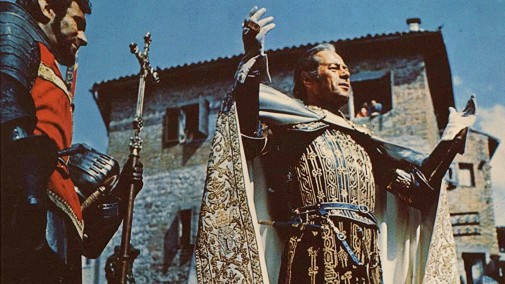
BEST COSTUME DESIGN, COLOR
- Marjorie Best & Vittorio Nino Novarese, The Greatest Story Ever Told
- Phyllis Dalton, Doctor Zhivago ★
- Edith Head & Bill Thomas, Inside Daisy Clover
- Dorothy Jeakins, The Sound of Music
- Vittorio Nino Novarese, The Agony and the Ecstasy
All of these are period films, though their approaches to the challenge of evoking the past vary greatly. Both the works for which Vittorio Nino Novarese is nominated represent sprawling immersive visions of history. The Greatest Story Evert Told dresses the biblical narratives in yards of natural fibers whose textures fill the screen. Regarding The Agony and the Ecstasy, the Italian Renaissance is brought to the screen in exquisite detail. Only Diane Cilento's costumes leave a bit to be desired, but Rex Harrison's papal splendor more than makes up for it.
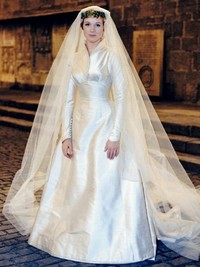 The remaining nominees veer wildly away from history. The Sound of Music and Inside Daisy Clover have stories rooted in specific periods, World War II and the Hollywood of the 30s respectively, but neither film's costumes do much to situate the viewer in a specific time. This works for The Sound of Music, whose designs are iconic and include my favorite movie wedding gown of all-time (pictured left). Inside Daisy Clover's anachronisms, on the other hand, are glitzy but distracting and disappointing.
The remaining nominees veer wildly away from history. The Sound of Music and Inside Daisy Clover have stories rooted in specific periods, World War II and the Hollywood of the 30s respectively, but neither film's costumes do much to situate the viewer in a specific time. This works for The Sound of Music, whose designs are iconic and include my favorite movie wedding gown of all-time (pictured left). Inside Daisy Clover's anachronisms, on the other hand, are glitzy but distracting and disappointing.
Doctor Zhivago's wardrobe is gorgeous, but its recreation of Revolutionary Russia has more to do with the 1960s than the 1910s. Dalton won the first of her two Oscars for it. She'd conquer another little golden man in 1989 for Kenneth Branagh's Henry V.
That's it for the winner and nominees, but what about the contenders that didn't make the cut? At this time in Oscar history, AMPAS still divulged some of their lists of finalists in the so-called "below the line" categories, through a process that's something like what we still have today in a few categories with "bake-offs" (like Visual Effects and Makeup) or that use rounds of voting with finalists (like International Feature or Documentary) . According to SixthPlaceOscarPolls, the runners-up in this category were…
- Ray Aghayan, Do Not Disturb
- Jean Louis, Strange Bedfellows
- Walter Plunkett, Marriage on the Rocks
- Sheila O'Brien, Never Too Late
- Rosemary Odell, Shenandoah
What's most curious about this selection is that four of them are contemporary narratives unlike the totality of the nominees. Only the costumes of Shenandoah, a Jimmy Stewart western, can be defined as period. Do Not Disturb and Marriage on the Rocks would have been fun glamorous additions to the actual Oscar lineup.
Mostly, however, I'm surprised these movies came so close to a nomination while other more outwardly lavish wardrobes were ignored. Specifically, Othello's absence feels odd since the costumes are one of the few worthwhile elements in the whole production.
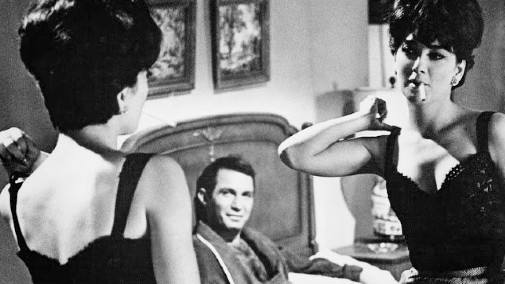
BEST COSTUME DESIGN, BLACK-AND-WHITE
- Julie Harris, Darling ★
- Edith Head, The Slender Thread
- Jean Louis & Bill Thomas, Ship of Fools
- Moss Mabry, Morituri
- Howard Shoup, A Rage to Live
Unlike the color category, this lineup does feature some contemporary set narratives, including the winner, Darling. It seems like the key to winning Best Costume design Oscars in 1965 was to have Julie Christie starring in your picture. As for Julie Harris, this was her first and only Oscar nomination and win.
A Rage to Live illustrates its characters' dangerous libidinous desires through carefully chosen fashions. In comparison, The Slender Thread is much more subdued and one can imagine that its nomination was due more to Edith Head's fame in the industry rather than any dazzlement from the designs.
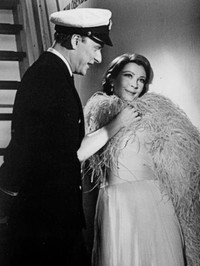 Morituri and Ship of Fools, are both haunted by the dark legacy of World War II. While the former tells a story of wartime espionage in crisp military uniforms, the later takes place before the war had started. Like the title implies, its setting is a ship of travelers whose destiny is the doomed Germany of 30s. Though, I couldn't tell you that by looking at any images from the film. The first time I watched Ship of Fools, I kept forgetting it was supposed to be set in the prelude to war, since, sartorially, the flick is pure 60s. Such a style could work in a Christian Petzold-esque displacement of historical action, but, here, it feels misjudged.
Morituri and Ship of Fools, are both haunted by the dark legacy of World War II. While the former tells a story of wartime espionage in crisp military uniforms, the later takes place before the war had started. Like the title implies, its setting is a ship of travelers whose destiny is the doomed Germany of 30s. Though, I couldn't tell you that by looking at any images from the film. The first time I watched Ship of Fools, I kept forgetting it was supposed to be set in the prelude to war, since, sartorially, the flick is pure 60s. Such a style could work in a Christian Petzold-esque displacement of historical action, but, here, it feels misjudged.
Weirdly enough, there was only one runner-up listed by the Academy. Jean Louis was the dreaded sixth-placer for his work in Mirage. I'd certainly rank it above his designs for Ship of Fools, mostly because of the sleek elegant frocks Diane Baker gets to model.
That's all there is to say about the choices of the Academy.
Now, regarding my personal ballot, I've decided to do away with the black-and-white/color separation. However, I did base my selection on the Oscar eligibility list.
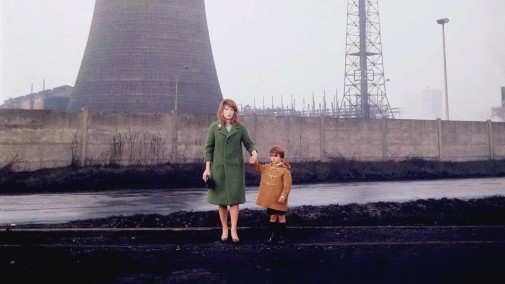
Some honorable mentions that didn't quite make the cut include the exhaustingly titled Those Magnificent Men in Their Flying Machines or How I Flew from London to Paris in 25 hours 11 minutes. Osbert Lancaster, who won a BAFTA for this film, created a wonderfully silly collection of Edwardian fashions, using anachronism for comedic effect. One should also show some love to the painterly use of color in Antonioni's Red Desert. Monica Vitti's green coat is a dream of vitality in the grey industrial landscape and is a good candidate for the best individual costume of the movie year.
Without further ado, my five nominees are:
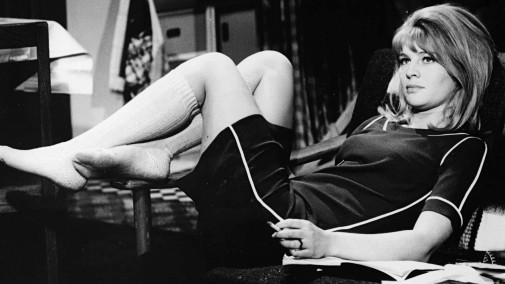
DARLING
Costumes designed by Julie Harris
The Swinging Sixties and its fashions are perfectly crystallized in this movie about an amoral model. The costumes thus play an indispensable role in the visual storytelling, as important to define the character of Diana Scott as Julie Christie's Oscar-winning performance.
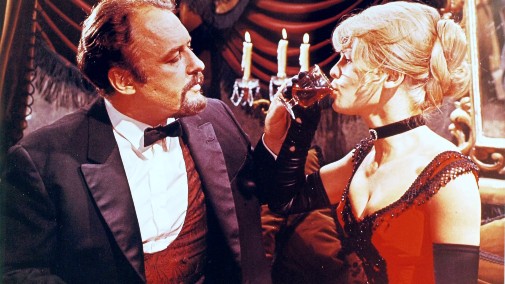
DOCTOR ZHIVAGO
Costumes designed by Phyllis Dalton
Christopher James and Daniel Walber have already written wonderful pieces dissecting the aesthetic of Doctor Zhivago, how its detours from historical veracity are a canny reflection of the protagonist's poetry as an escape from reality. The fantasy of the designs is intrinsic to the movie's success and conceptual discourse. They're also beautiful to behold, especially Lara's incandescent red dress.
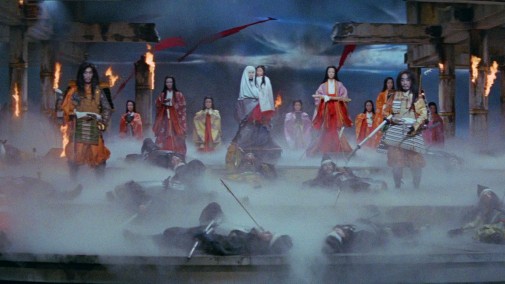
KWAIDAN
Costumes designed by Masahiro Katô
Masaki Kobayashi's Kwaidan is an anthology of horror, featuring four tales inspired by Japanese folklore. Far from trying to suggest a material reality that's intruded upon by supernatural evils, the filmmakers conjure a more abstract and ritualistic atmosphere. The advent of cruel spirits isn't so much an intrusion, as a revelation of the truth hidden beneath the mask of the mundane. The costumes follow the same logic, imbuing the rural settings with a theatrical verve, impossible colors, and sights that are as disturbing as they are majestic.
Masahiro Katô would be my winner and it's sad that the Academy didn't nominate Kwaidan. After all, they weren't averse to rewarding costuming excellence in Japanese cinema.
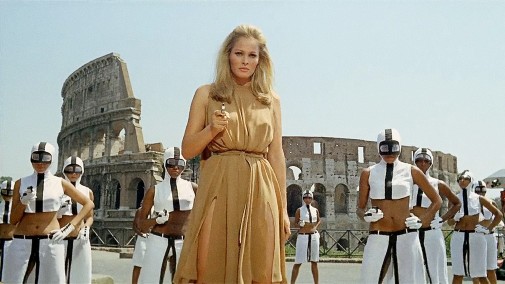
THE 10TH VICTIM
Costumes designed by Giulio Coltellacci
The 10th Victim is a delightfully deranged sci-fi thriller directed by Elio Petri and starring Marcello Mastroianni. Imagining a 21st century where murder is a cinematic experience, costume designer Giulia Coltellacci created a parade of absurd fashion that generally looks like 60s Euro glamour on steroids. It's silly, colorful, kooky, and absolutely delectable.
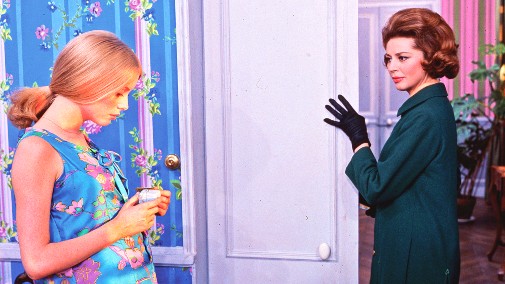
THE UMBRELLAS OF CHERBOURG
Costumes designed by Jacqueline Moreau
Jacques Demy's deconstruction and reimaging of the Hollywood musical mixes unashamed artifice with the gritty tactility of real locations. It's a dance between two different film languages and the costumes are part of the stylistic choreography. The wardrobe is believable as real clothes, but its relationship with the sets is always heightened. The colors are too intense, and the materials in too perfect harmony with the scenery. It's reality refracted through dreamy reverie instead of a direct mimesis
Moreau was also eligible for her wonderful work in another Nouvelle Vague musical, Godard's A Woman is a Woman. Either picture would have made for a brilliant nominee.
What are your favourite costumes from 1965?